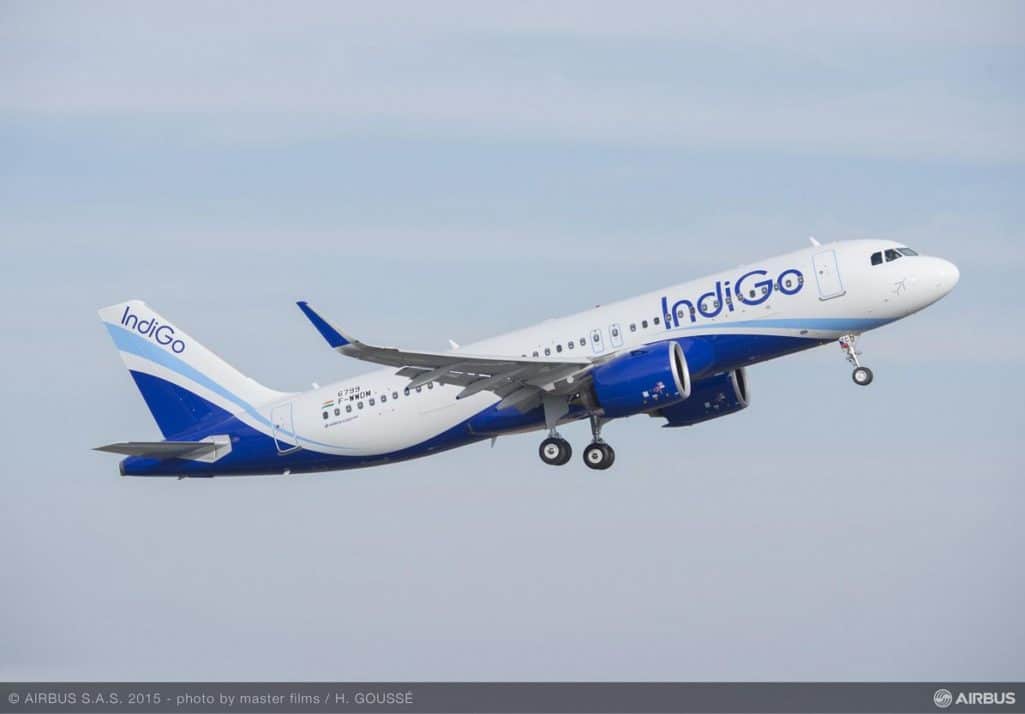Aerospace
Indigo selects CFM engines to power its fleet of 310 new Airbus A320neo

National: May 21, 2021 — IndiGo today announced that it has selected CFM International LEAP-1A
engines to power its fleet of 310 new Airbus A320neo, A321neo, and A321XLR aircraft. This agreement
includes 620 new installed engines and associated spare engines, as well as a long-term, multi-year
service agreement.
In 2019, IndiGo Airline selected LEAP-1A engines and signed a long-term service agreement for engines to
power 280 A320neo family aircraft. This new agreement, therefore, secures the LEAP-1A engine and
its long-term service agreements for a total of 590 IndiGo A320neo family aircraft.
The airline is currently operating seven A320neo and 15 A321neo with LEAP-1A engines. This
agreement will secure LEAP-1A engines and service agreements for itsA320neo family aircraft to be
delivered from 2023 onwards.
“This is a pivotal milestone that reflects our long-standing commitment to rapidly strengthen our
network both domestically and internationally. This expansion will serve as a catalyst to boost India’s
economic growth and the mobility of its people. India’s aviation sector is poised to grow from strength
to strength, and we will continue on our mission of building a world class transportation network. We
are here to deliver on our promise of providing low fares and a courteous, hassle free experience to
all our customers.” said Ronojoy Dutta, Chief Executive Officer of IndiGo.
“We are pleased to extend our partnership with CFM for our next batch of Airbus A320neo, A321neo
and A321 XLR aircraft,” said Riyaz Peermohamed, Chief Aircraft Acquisition and Financing Officer of
IndiGo. “The introduction of the CFM LEAP engines in our fleet will allow us to maintain our strong
focus on lowering operating costs and delivering fuel efficiency with high standards of reliability.”
“We are incredibly honored by IndiGo’s renewed trust in CFM,” said Gaël Méheust, president and CEO
of CFM International. “We are fully committed to helping IndiGo optimize its operations by providing
them with the industry-leading asset utilization, fuel efficiency, and overall cost of ownership.”
“We are proud to expand our relationship with IndiGo and play a key role in their continuous growth,”
said Philippe Couteaux, vice president Sales & Marketing of CFM parent company, Safran Aircraft
Engines. “We take IndiGo’s trust as a great responsibility to keep supporting their fleet with the highlevel CFM standards”.
FAA issued 737 MAX’s LEAP-1B engine corrosion issue
The LEAP engine, which has logged more than 10 million engine flight hours in less than five years of
commercial service, continues to set new industry standards for asset utilization, while reducing fuel
consumption and CO2 emissions by 15 percent while maintaining the highest reliability rates in this
thrust class
Airbus A400M completes helicopter air-to-air refueling Certification

Aerospace
Boeing Transfers Rocket Stage to NASA, Paving Way for Human Moon Mission

Boeing has achieved a significant milestone by providing NASA with the second core stage of the Space Launch System (SLS) rocket.
This crucial component, crafted at NASA’s Michoud Assembly Facility (MAF), is set to propel the Artemis II crew into lunar orbit, marking humanity’s return to deep space after a 50-year hiatus.
The monumental Boeing-built rocket stage, the largest element of the Artemis II mission, will embark on a journey aboard the Pegasus barge, traveling 900 miles to NASA’s Kennedy Space Center.
Comparison of two legendary aircraft B777x vs B747 aircraft:Click here
Upon arrival, it will be meticulously integrated with other essential Artemis II components, including the upper stage, solid rocket boosters, and NASA’s Orion spacecraft within the iconic Vehicle Assembly Building. This intricate integration process is a vital step toward the eagerly anticipated Artemis II launch, slated for 2025.
“Boeing-built products helped land humankind on the moon in 1969, and we’re proud to continue that legacy through the Artemis generation,” remarked Dave Dutcher, vice president and program manager for Boeing’s SLS program. “Together, with NASA and our industry partners and suppliers, we are building the world’s most capable rocket and paving the way to deep space through America’s rocket factory in New Orleans.”
NASA, Lockheed Martin Reveal X-59 Quiet Supersonic Aircraft:Click here
The delivery of Core Stage 2 marks a significant achievement in the evolution of the SLS rocket. Towering over 200 feet and powered by four RS-25 engines, this core stage, coupled with two solid-fueled booster rockets, will generate a staggering 8.8 million pounds of thrust. This immense power is crucial to launching Artemis II and future missions into the vast expanse of space.
The SLS rocket stands unparalleled in its capability to transport both crew and substantial cargo to the moon and beyond in a single launch. Its extraordinary capacity will facilitate the delivery of human-rated spacecraft, habitats, and scientific missions to destinations including the moon and Mars, ushering in a new era of space exploration.
-

 Travel1 week ago
Travel1 week agoAir India to Expand US Operations with Three New Routes After a Decade
-

 Travel2 weeks ago
Travel2 weeks agoWhy We Should Avoid These Stamps in a Passport
-

 Airlines1 month ago
Airlines1 month agoInvestigations Reveal Fake Chinese Titanium in Boeing and Airbus Jets
-

 Tech4 weeks ago
Tech4 weeks agoChina’s CATL Plans 1,800-Mile Electric Plane Launch by 2027
-

 Airport3 days ago
Airport3 days agoTop 10 Largest Airports in the World by Size
-

 Aerospace4 weeks ago
Aerospace4 weeks agoChina’s Fighter Jets Turn Wings into Autonomous Drones
-

 Airlines4 days ago
Airlines4 days agoAir India Rolls Out A350s for Delhi-New York JFK and Newark Routes
-

 Defence3 weeks ago
Defence3 weeks agoBoeing Enhances Chinook with New Engines and Block II Upgrades at $96 Million







